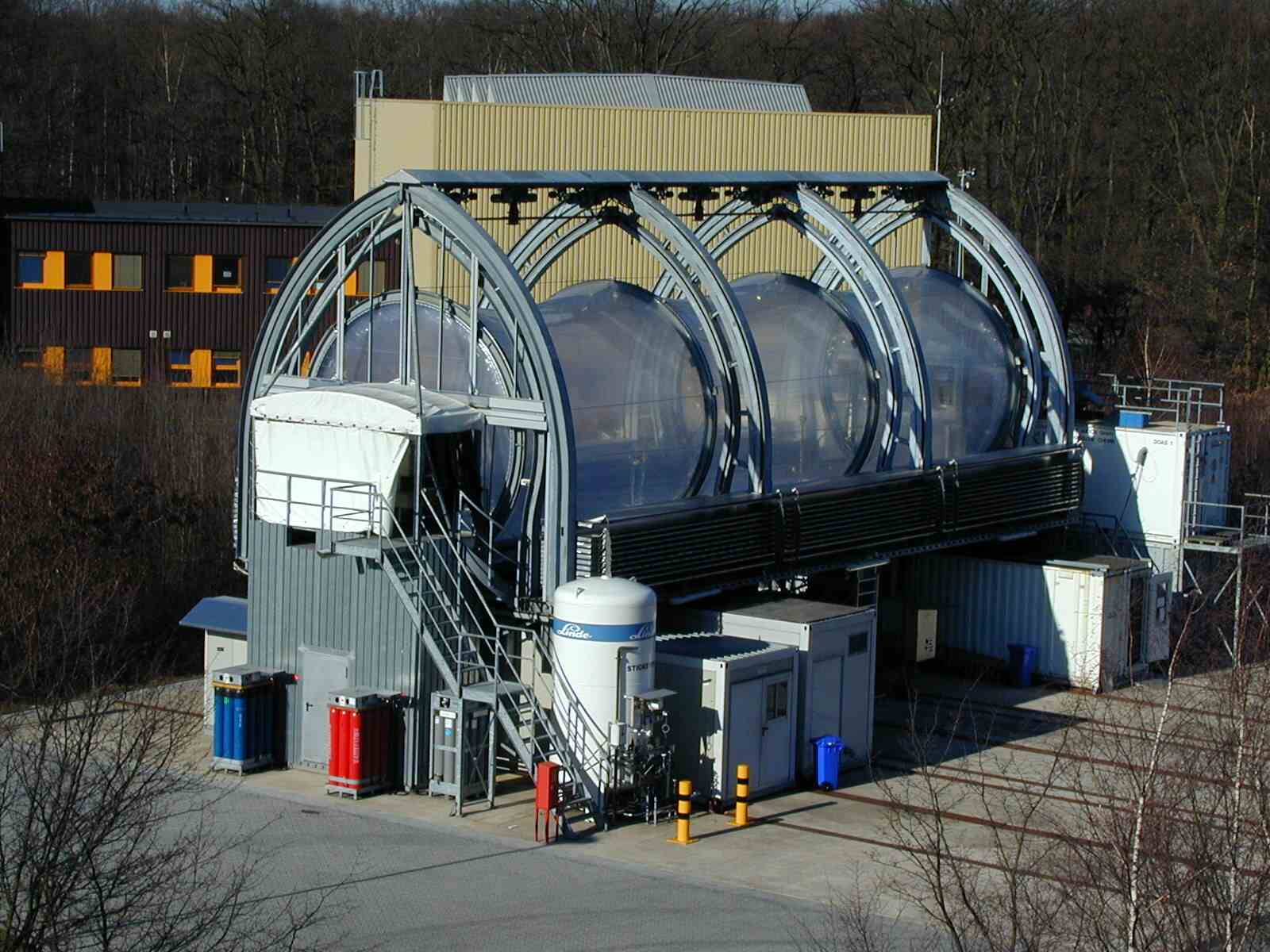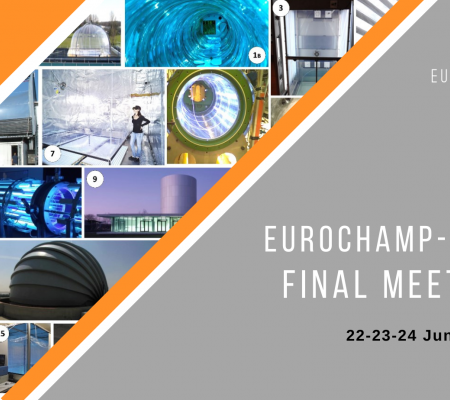| General information | |
| Access mode | Physical access |
| Infrastructure name and acronym | Simulation of Atmospheric PHotochemistry In a Large Reaction Chamber (SAPHIR) |
| Photos |  |
| Location | Forschungszentrum Jülich, Jülich, Germany Geographical position: 50.909° N, 6.4131° O |
| Website | http://www.fz-juelich.de/iek/iek-8/EN/Expertise/Infrastructure/SAPHIR/SAPHIR_node.html |
| Legal name of organisation operating the infrastructure | Forschungszentrum Jülich GmbH |
| Description of the infrastructure | |
| Brief general description of the infrastructure to which access is offered |
SAPHIR provides a platform for reproducible studies of the atmospheric degradation of biogenic and anthropogenic trace gases and the build-up of secondary particles and pollutants. The outdoor chamber is of cylindrical shape (volume : 270m3) and has a shutter system that can be quickly opened and closed to expose the air mixtures to sunlight. The high purity of the air supply and the large volume to surface ratio allows running experiments at low, atmospheric concentrations of trace gases with only minor influences of chamber wall interactions, so that the transformation of trace gases and aerosol can be observed over a long period up to several days. Either artificial trace gas mixtures can be added or emissions from plants that are housed in a separate plant chamber, which air can be transferred into the SAPHIR chamber. |
| Services currently offered by the infrastructure and its research environment | • The chamber can be used for high quality experiments investigating the transformation of gas-phase species and aerosols can be performed with the focus on photochemistry. • Measurements of trace gases with instrumentation that is permanently installed at the chamber are made available. Quality of measurements is regularly checked by calibration. • Installation of additional instrumentation provided by users is supported. • Planning of experiments is done in collaboration with experts from Forschungszentrum Jülich. |
| Modalities of access and support offered under EUROCHAMP-2020 | |
| Typical duration of work |
3-4 weeks |
| Community/user type served |
SAPHIR is mainly used for research projects. |
| Scientific and technical support offered |
Planning of experiments is assisted by experts from Forschungszentrum Jülich |
| Logistic and administrative support offered |
Support is provided for the logistic and administrative planning of projects at the chamber. |
| Person in charge of access provision at the infrastructure |
Dr. Hendrik Fuchs, researcher, h.fuchs@fz-juelich.de |
| Extended technical information | |
| Physical description | Outdoor chamber made of double-wall Teflon (FEP) film, cylindrical shape (diameter 5m, length 18m, volume 270m3) S/V ratio: ~ 1 Temperature range: ambient temperature; there is no active temperature control, directly from ambient (typically 10 to 25°C) Pressure range: ambient pressure RH range: 0 to 90% RH Projected surface area: ~270m2 surface area in total Aerosol lifetime: the loss rate is approximately 2 x 10e-5 s-1, meaning a lifetime of 14 hours |
| Mechanical description |  |
| Radiation spectra | Natural sunlight. Shutter system allows for experiments in the dark. |
| Auxiliary mechanism | • Parameterization of sources for nitrous acid, formaldehyde, acetone using measured temperature, solar radiation, relative humidity. • Rate for dilution of trace gases calculated from measured replenishment flow. • Background OH reactivity parameterized as reactant behaving like CO (conversion of OH to HO2). Typical values for OH reactivity less than 1.5s-1. • Ozone loss in clean air (typically rate < 3x10-6s-1. • Photolysis frequencies calculated from actinic flux measured outside the chamber. |
| Description paper | Rohrer, F., et al. (2005). "Characterisation of the photolytic {HONO}-source in the atmosphere simulation chamber {SAPHIR}." Atmos. Chem. Phys. 5: 2189-2201. |





